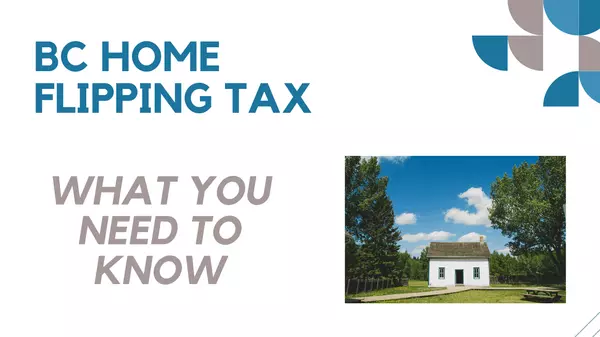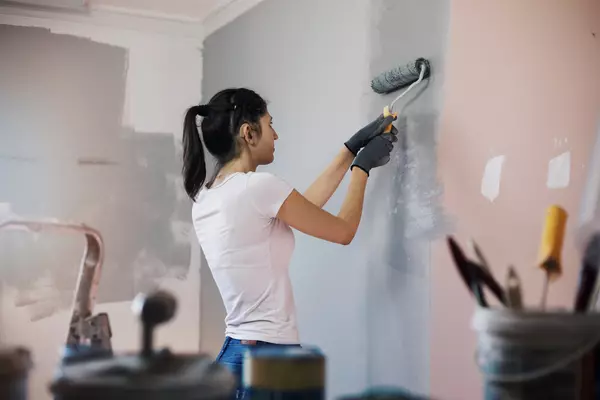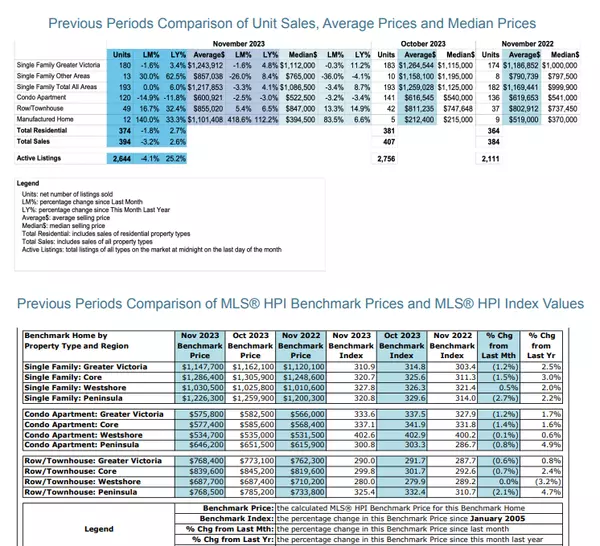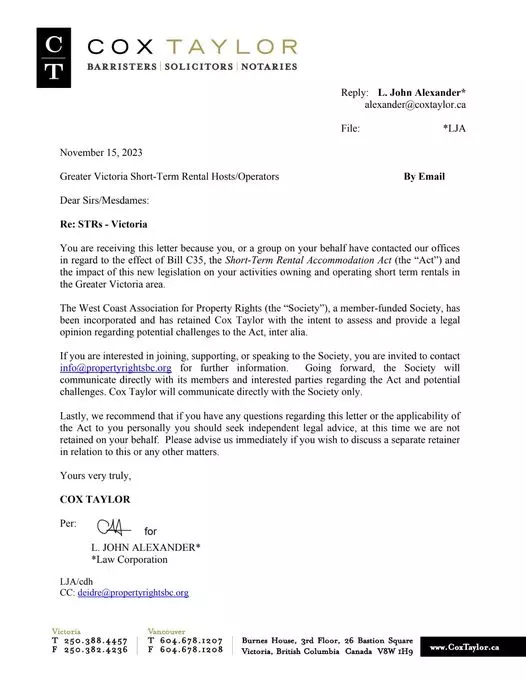
New STR rules are coming to BC.
British Columbia has recently introduced new rules for short-term rentals to regulate the market and return homes to the long-term rental market. The new rules apply to all short-term rentals being offered to the public, including rentals listed on Airbnb, VRBO, Expedia, and FlipKey. The number of short-term rentals has expanded rapidly over recent years in B.C. and around the world, and data shows that short-term rentals are diverting thousands of long-term rentals onto the short-term market in B.C., taking away homes people need. The new rules aim to give local governments more robust tools to enforce short-term rental bylaws, return short-term rental units to the long-term rental market, and establish a new Provincial role in the regulation of short-term rentals. Strata corporations can still have strata bylaws that limit or ban short-term rentals and levy fines of up to $1,000 a day. The legislation would force short-term rental platforms to share their data with the province for enforcement and tax purposes. It would limit short-term rentals to within a host’s home, basement suite, or laneway home on their property. Most of the rules will apply to communities with a population of 10,000 or more. Hoteliers have praised the new rules as the "gold standard"..obviously! The dust may take some time to settle this issue, so stay tuned for more.
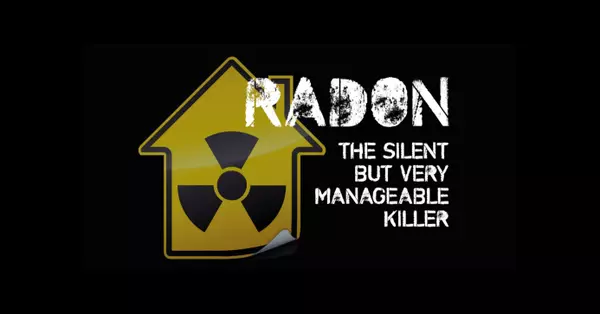
Radon in BC and what it can mean for your family
November is Lung Health Awareness Month, and this month, we are raising awareness about a particular problem concerning radon gas. I wanted to discuss radon and hopefully provide homeowners with crucial information about radon and its significance in our lives. Radon is a naturally occurring radioactive gas resulting from the breakdown of uranium in the earth's crust, which then seeps into the soil. It can infiltrate homes through various pathways, including the soil, pipes, windows, sump pumps, unfinished floors, crawl spaces, foundation wall cracks, and floors. Despite its presence, radon remains invisible, odourless, and tasteless. Determining the radon levels in a home is only possible through individual testing, as they can vary significantly from one residence to another. Several factors influence the amount of radon present in a home, such as the geological characteristics of the area, home construction, and weather conditions. In colder months, when homes are sealed and heating systems are in use, radon can become concentrated and pose health risks. So, why is radon a concern, and why should you be vigilant about it? Long-term exposure to radon can be hazardous, even if its immediate effects may go unnoticed. Radon is a carcinogen known to cause cancer and ranks as the second leading cause of lung cancer in North America, following smoking. Even if you've never smoked, your risk of developing lung cancer can increase if radon levels in your home are elevated.Hence, it is crucial to test your home for radon and take remedial actions if the levels are excessive. Radon testing is a straightforward and cost-effective process. Certified radon tests can be obtained from stores or online and can be performed by homeowners themselves. However, it is advisable to hire a qualified professional, such as a home inspector certified by the Canadian National Radon Proficiency Program (C-NRPP), to ensure accurate results. Even if your new home includes a radon reduction system in its construction, you can further reduce radon levels by utilizing a Heat Recovery Ventilator (HRV). Many provinces, including Ontario, mandate HRV installations in new builds. An HRV facilitates the exchange of indoor and outdoor air, conserves energy, reduces heating and cooling expenses, and can lower radon concentrations by approximately 50%, according to CAREX Canada. For an effective radon reduction solution, consider installing a radon monitor alongside your HRV. The monitor continuously measures radon peaks, activating the HRV at high-speed override when elevated levels are detected. An Energy Recovery Ventilator (ERV) can also be a viable alternative, offering year-round moisture management for your home. ERVs provide superior ventilation and humidity control by drawing fresh outdoor air inside and expelling stale indoor air through a high-efficiency furnace. To identify the most suitable method for your home, consult a radon mitigation specialist. It is essential to dispel the misconception that new homes are exempt from radon exposure. In reality, radon can be present in every home and may even be more concentrated in newer homes due to tighter construction standards aimed at energy efficiency. Radon can also be found in multi-story and high-rise buildings, particularly in stairwells and elevator shafts, depending on the ventilation system. Radon is a silent but potentially deadly threat that can infiltrate your home without you ever knowing. Fortunately, radon testing today is easy and becoming more available to homeowners in BC every day.
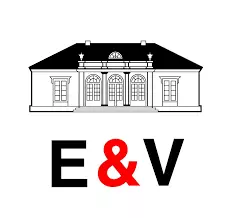
Victoria Real Estate Market Sees Summer Sales Surge Amidst Supply Challenges
August 2023 Victoria Real Estate Review The Victoria Real Estate market witnessed an active August, with a total of 544 properties sold, marking a 13.8% increase compared to the same month last year and a slight 8.6% decrease from July 2023. This dynamic shift in sales activity was characterized by a surge in condominium and single-family home purchases, according to the Victoria Real Estate Board's latest report. Condo Sales Soar Condominium sales stood out, with a notable 10.8% increase from August 2022, totalling 164 units sold. This growth reflects changing preferences among buyers and a growing demand for more compact and affordable housing options. Single-Family Homes in Demand Sales of single-family homes also saw significant growth, rising by 9.6% compared to August 2022, with a total of 273 homes sold. This demonstrates that despite the allure of condos, many buyers are still keen on larger, standalone properties. Supply Remains a Challenge One of the persistent challenges in the Victoria housing market is the lack of supply. As of the end of August 2023, there were 2,490 active listings, a 2.9% increase from the previous month and a substantial 16.5% increase from August 2022. However, Sol emphasized that these inventory levels, while improved, are still insufficient to create a well-balanced market. He stressed the importance of increasing the supply of housing options, particularly middle-tier homes like townhouses and condos, which only accounted for 37.1% of listings. Price Trends The Multiple Listing Service® Home Price Index benchmark values provide further insights into the market. In August 2022, the benchmark value for a single-family home in the Victoria Core was $1,327,700. In August 2023, this value decreased slightly by 0.3% to $1,323,900, although it was up from July 2023. For condos, the benchmark value decreased by 0.3% from August 2022 to August 2023, settling at $582,000, also showing a slight increase from July. Conclusion Victoria's real estate market remains active, with strong condo and single-family home sales. However, the challenge of limited supply continues to drive prices and demand. As the market evolves, addressing the supply issue will be crucial in ensuring a balanced and sustainable housing market for both buyers and sellers in the region.
Categories
Recent Posts
